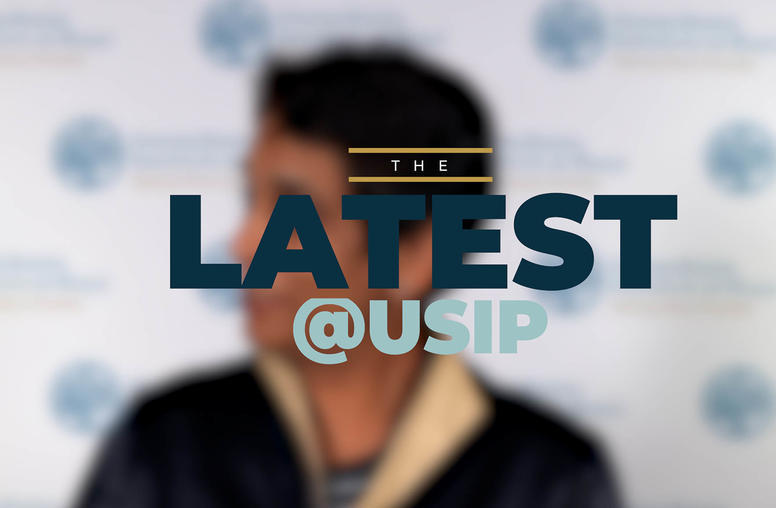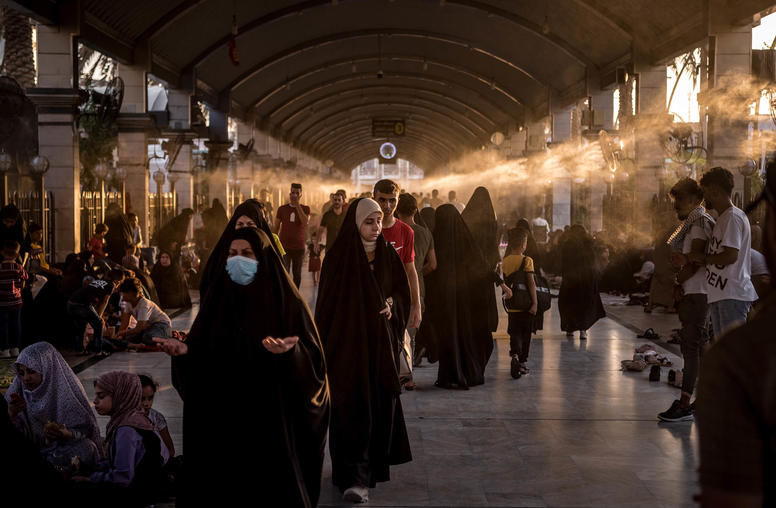USIP is closely following the effects of the novel coronavirus around the world and we’re particularly concerned about its effects in fragile states and conflict zones, which are especially vulnerable to the impacts of these kinds of outbreaks. This week, our Jonathan Pinckney looks at the impact on nonviolent action and popular movements around the world. How can people advance their demands when they need to stay socially distant?
Read more from Jonathan and Miranda Rivers: Nonviolent Action in the Time of Coronavirus
Transcript
Hi, I'm Jonathan Pinckney, a program officer at the U.S. Institute of Peace. Here at USIP, we're assessing the impact of the COVID-19 pandemic on various aspects of conflict around the world. And one of the important aspects of the pandemic, and the restrictions because of the pandemic, are on nonviolent action and popular movements. How can people continue to advance their demands and push for positive change when they need to stay socially distant, and those social social distancing restrictions prevent them from gathering in big numbers in the streets? I wrote about that with Miranda Rivers on the USIP website, but I want to talk more about it here, based on some questions from social media.
So the first big question, from Paul Nolan, is whether nonviolent action just has to completely grind to a halt because of coronavirus.
And the short answer is, no. While gathering people in public protests is something that is much more difficult to do at this point in time, much less advisable, there are literally hundreds of other potential tactics that movements can use in times when gathering large numbers of people in the streets for public demonstrations isn't feasible.
To conflate public protests with nonviolent action is a key mistake. People can engage in boycotts, strikes and many, many other kinds of tactics. There's currently a data gathering effort by the Crowd Counting Consortium, led by Dr. Erica Chenoweth at Harvard University, that has already cataloged over a hundred different tactics that movements have used since the outbreak of COVID-19, and that's just the starting point.
While gathering people in public protests is something that is much more difficult to do at this point in time, much less advisable, there are literally hundreds of other potential tactics that movements can use in times when gathering large numbers of people in the streets for public demonstrations isn't feasible.
In places like Brazil, people have banged pots and pans together, while standing in the windows of their homes, in order to express dissent, and more and more actions like this are taking place every day. In some cases, the virus is actually increasing public dissent as people are disillusioned with, or angry because of, governments' bungled or weak responses to the virus. And of course, one major thing that many movements are doing, is shifting their activism online.
And this is our second question from the Sie Center: Are we seeing an increase in online forms of activism in response to movement restrictions and social distancing requirements?
And again, the answer is definitely yes. This has been a major aspect of many movements activities for quite some time, but in this era of social distancing, many movements are making it a much more central part of their activities. And we're seeing huge instances of online protests. Larger than anything that we've seen in the past. For instance in Israel, an opposition movement there gathered over a half a million people for a single online protest rally. Now this comes with some unique challenges. In particular, scholars who identified, over some time, an increasing trend of, what they call, digital authoritarianism, where repressive governments are using digital tools in order to restrict civic space. So as movements shift to these online spaces, they're going to face unique challenges, and that will be an important thing to keep an eye on going forward.
And finally, Ben Naimark-Rowse has asked if there are any common efforts between political scientists and people from public health, or biology or other physical sciences to come up with interdisciplinary recommendations for responding to COVID-19.
I'm not aware of any efforts like this. I would love to know more about that, but this highlights the importance of bringing into account the social and political dynamics of this pandemic. Obviously, the pandemic's primary impact is as a public health crisis. But beyond that, the ripple effects of COVID-19 are going through every aspect of our political systems and societies. And so, it's absolutely crucial for those secondary and tertiary effects to be an important part of the conversation of how we respond to COVID-19.
So thanks to everyone for those great questions. Keep the conversation going on social media with the #COVIDandConflict and visit our website, usip.org, for more resources. Thank you.



